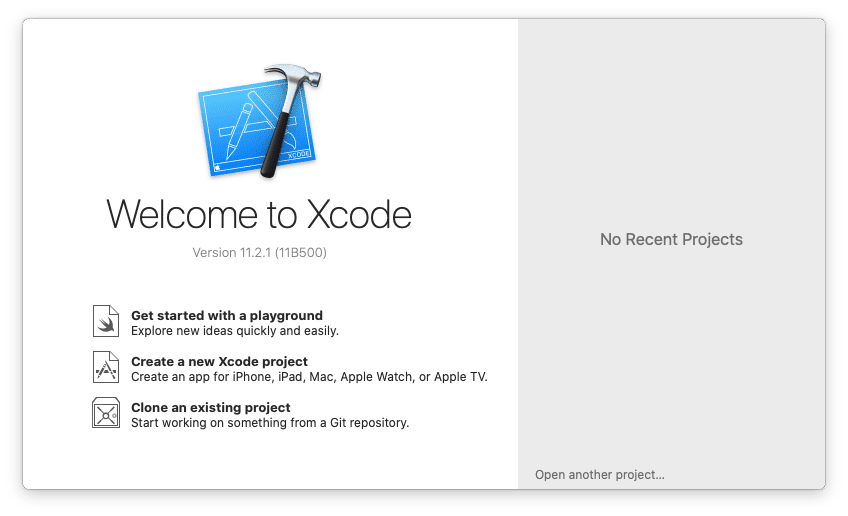

- XCODE 6 AND 7 BOTH INSTALLED INSTALL
- XCODE 6 AND 7 BOTH INSTALLED UPDATE
- XCODE 6 AND 7 BOTH INSTALLED UPGRADE
- XCODE 6 AND 7 BOTH INSTALLED DOWNLOAD
- XCODE 6 AND 7 BOTH INSTALLED FREE
After the upgrade, all my existing Ruby projects were still working fine. I have two Intel Macs, and one M1 MacBook Air. Like many people, I upgraded my Macs to macOS 12.6 yesterday.
XCODE 6 AND 7 BOTH INSTALLED INSTALL
It also let you easily install Ruby 2.5.9 and older with Rosetta.

XCODE 6 AND 7 BOTH INSTALLED UPGRADE
Read my guide that shows how and why to upgrade the Ruby version in your project. If you’re having issues running older versions of Ruby (2.6 and below), you have the following options: It automatically determines whether or not any flag is needed, and optimizes the installation for you. If you use Ruby on Mac, you don’t have to worry about any of this, now or in the future. Now that 3.1.3 and 2.7.7 are released, you should no longer need to add the -enable-shared flag. Today, you can install rice without the -enable-shared flag (I tested with Ruby 3.1.3 on both my Intel and M1 Mac), so there doesn’t seem to be a good reason to turn it on by default anymore. However, turning on that flag affects performance. If you use a different tool, such as asdf or rbenv, you might be able to install these older versions (such as 2.7.6 or 3.1.2) out of the box because they both use ruby-build, which adds the -enable-shared flag by default.Īs an aside, that flag was turned on by default in ruby-build back in 2019 because some gems, like rice, failed to install otherwise.
XCODE 6 AND 7 BOTH INSTALLED UPDATE
After that, you can update to the latest version by simply running romup in your Terminal if you have the Prime version, or rom update in the Ultimate version.įor non-customers who use ruby-install or frum, if you want to install versions of Ruby 3.1.x older than 3.1.3, or Ruby 2.7.x older than 2.7.7, you can install them by adding the -enable-shared flag, like this:
XCODE 6 AND 7 BOTH INSTALLED DOWNLOAD
If you’re a Ruby on Mac customer, check your email for a link to download the latest version. I’ve written a detailed guide that explains how and why to upgrade the Ruby version in your project. However, instead of using workarounds for older versions, I highly recommend you update your project to a newer version of Ruby. For older Ruby versions, you’ll still need the workarounds. UPDATE on 11/26/22: Ruby 3.1.3, 3.0.5, and 2.7.7 are now available, so you should be able to install them without any of the workarounds mentioned in this article.

I confirmed this on my M1 MacBook Air by cloning the Ruby GitHub repo, checking out the ruby_3_1 branch, and compiling Ruby 3.1.3. This means that when 3.1.3 and 2.7.7 are released, you’ll be able to install them without any workarounds. UPDATE: PR 6440 in the Ruby GitHub repo fixes this issue in 3.1 and 2.7. If the version starts with 14, then keep reading.

Project, especially and for making XcodeInstall C extension free.If you’ve recently updated your Intel or Apple Silicon Mac to macOS 12.6.x (Monterey) or 13.x (Ventura), or if you updated the Apple command line tools and/or Xcode to version 14 on macOS 12.5 or higher, and are unable to install Ruby or certain gems (most likely due to an error that says “ld: symbol(s) not found for architecture arm64” or “ld: symbol(s) not found for architecture x86_64”), this guide is for you.Īssuming you already have Homebrew installed, you can find out which version of the command line tools and/or Xcode you’re using by running brew config, then look for the lines that start with CLT: and Xcode. Additionally, many thanks to everyone who has contributed to this This downloading script which has been used for some inspiration, also thisįor doing the installation. Thanks to the original (and best) author. But it still won't work if your Xcodes are not located under /Applications folder. To workaround the Spotlight limitation, XcodeInstall searches /Applications folder to locate Xcodes when Spotlight is disabled on the machine, or when Spotlight query for Xcode does not return any results. Indexing is happening, it might show inaccurate results and it will not be able to see installed XcodeInstall normally relies on the Spotlight index to locate installed versions of Xcode. Unfortunately, Xcode will load third-party plugins even in that situation, which leads XcodeInstall automatically installs additional components so that it is immediately usable from theĬommandline.
XCODE 6 AND 7 BOTH INSTALLED FREE
Unfortunately, the installation size of Xcodes downloaded will be bigger than when downloading via the Mac App Store, see #10 and feel free to dupe the radar. Please authenticate to install iOS 8.4 Simulator. $ xcversion simulators -install='iOS 8.4'


 0 kommentar(er)
0 kommentar(er)
